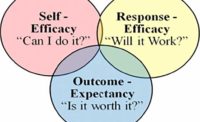How do you keep the faith ...
Do you take vitamin pills everyday? Exercise regularly? Buckle up in the car? If so, why? Many people take vitamin pills religiously, for instance, even though they experience no immediate, obvious benefit. Vitamins are good for us, say physicians and researchers. But most of us don't understand how or why they work. We just keep taking vitamins because we tell ourselves as a rule, it's the right thing to do. We have faith they are good for us. Behavioral scientists call this "rule-governed behavior." We'll abide by a rule because we believe it's good or appropriate, even though we get no immediate payback. We just take the pill, do the exercise, or buckle the safety belt because someone or something convinced us this behavior is worthwhile. Much of what we do for safety and health can be classified as rule-governed behavior. Our efforts to prevent workplace injuries only rarely are followed by immediate rewards. So we need to develop an internal script (or belief system) to keep us going. We need faith. Sacrificing for safety We need faith because asking people to actively care for health and safety means giving up a powerful immediate reward -- the ease, speed, or comfort that often comes from taking risks. In return for extra effort, we promise a bigger reward. Workers will save themselves from a personal injury, or lessen the chances of a coworker getting hurt. Unfortunately, this delayed reward might not seem credible. Who knows when the payoff might occur -- if at all? Most workers don't expect to get hurt on the job. Many don't see how their behavior can put others at risk. Experience most often says you can get away with risky behavior. We need faith for another reason: We'll likely never be able to document that one particular safety practice or process by itself improved our plant's safety record. Who knows what all the contributing factors are?

